Famous Psychology Experiments
The following is a list of the most famous psychology experiments from years gone by, most of which would be considered unethical if conducted today.
Experiment |
Date |
Researcher |
Description |
Pavlov's Dog
|
1890's |
Ivan Pavlov,
Military Medical Academy (St. Petersburg, Russia) |
Pavlov would ring a bell every time before feeding the dog. After awhile, the dog's mouth would salivate whenever it heard the bell, regardless of whether or not he received food. This experiment showed that conditioning is an important part of learning and that animals (and perhaps people) can be systematically trained to behave in certain ways. |
Little Albert Experiment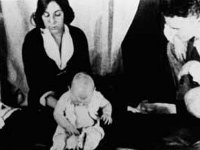
|
1920 |
John B. Watson,
Johns Hopkins University (Baltimore, MD, USA) |
A nine-month old baby named Albert was given a white rat to play with. Initially, Albert played with the rat without any fear. However, he was later given the rat again but this time, the experimenters made a loud noise. Eventually, Albert associated the rat with the noise and became afraid of the rat and in fact, demonstrated a fear of almost anything white and furry. This experiment seemed to show that our fears are connected to early childhood experiences. |
Asch Conformity Study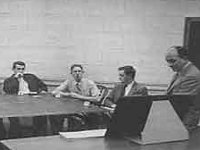
|
1951 |
Solomon Asch,
Swarthmore College (Swarthmore, PA, USA) |
A group of people were shown pictures with lines of various lengths and were then asked a simple question: Which line is longest? However, each time only one person in the group was a real participant. The others were all actors. Most of the actors were instructed to give the wrong answer. Strangely, the one participant usually agreed with the majority, even though they knew they were giving the wrong answer. This showed that people often care more about being the same as others than they do about being right. |
Robbers Cave Experiment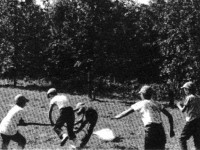
|
1954 |
Muzafer & Carolyn Sherif
University of Oklahoma (Norman, OK, USA) |
A pool of 12-year-old boys from similar backgrounds was divided into two groups and then taken to separate areas of a summer camp facility where they were able to bond as social units. Once the two groups were permitted to have contact, they showed clear signs of prejudice and hostility toward each other even though they had only been given a very short time to develop their 'in-groups'. Later, they were given a superordinate task that required cooperation and this led to conflict resolution and the breaking down of the social barriers. |
Surrogate Mother Experiment
|
1957-63 |
Harry Harlow,
University of Wisconsin (Madison, WI, USA) |
Monkeys were removed from their mothers and placed in a room with two different fake mothers: one made of wire that was designed to give milk and another that was made of a soft material but did not give milk. The monkeys preferred the soft mother and those that spent more time cuddling with it grew up to be more healthy. This experiment showed that love � demonstrated by physical body contact � is a more important aspect of the mother-child bond than the providing of basic needs. |
Milgram Experiment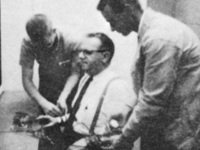
|
1961 |
Stanley Milgram,
Yale University (New Haven, CT, USA) |
Participants were told they were participating in a study on memory. They were asked to watch another person (who was actually an actor) do a memory test and were instructed to press a button that gave an electric shock each time the person got a wrong answer (the actor did not actually receive the shocks but pretended as if they did). The experimenters then asked the participants to keep increasing the shocks and most of them obeyed even though the person doing the memory test appeared to be in great pain. This experiment showed that humans are conditioned to obey authority and will usually do so even if it goes against their natural morals or common sense. |
Kitty Genovese Case
|
1964 | n/a | This was not a study but an actual murder case from Queens, New York. According to a NY Times article, 38 neighbours witnessed the event but no one called the police. Although these facts were most likely an exaggeration (there was probably only a dozen witnesses and records show that some calls were actually made), this case became an icon of the so-called 'Bystander Effect' which states that the more bystanders that are present, the less likely it is that any of them will step in and help. |
Stanford Prison Study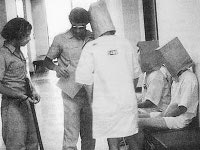
|
1971 |
Philip Zimbardo,
Stanford University (Palo Alto, CA, USA) |
Participants were randomly divided into two groups: prisoners and prison guards. The prison guards were told to run a prison for two weeks. After a few days, the prison guards became very cruel and the many of the prisoners became very submissive. The experiment actually had to be cancelled because it got way out of hand. Although the experiment did not have proper controls, some people claimed that it showed that people's behaviour is often related to the situation they are in and that people will conform to certain roles if put in them. |



